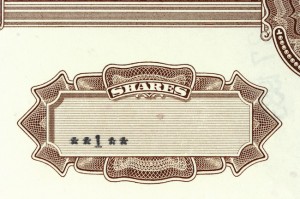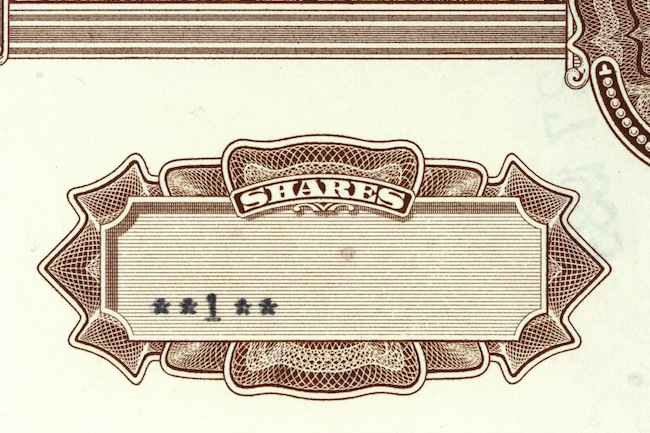
The Graham-Newman Corporation was essentially a hedge fund structured as an investment company through which Benjamin Graham managed money for outside partners. The compensation system was remarkably similar to a standard 2-and-20 deal used by many hedge funds today. Image © Thinkstock
The Graham-Newman Corporation was a stock company that essentially served as a hedge fund through which legendary investor Benjamin Graham managed money for his shareholders. It is the same firm where Warren Buffett worked in his twenties before moving back to Omaha and establishing the original seven partnerships upon which his fortune is based.
According to the shareholder letters for the Graham-Newman Corporation, in 1946, Benjamin Graham and his business partner, Jerome A. Newman, were paid the following for managing the fund:
- A base salary of $15,000 each. That is $163,000 today, plus
- Additional compensation equal to the lesser of:
-
- 1.) 12.5% to each, of the excess of the dividends paid during the year over an amount equal to $0.018 per share per day (or at the rate of $6.57 per year) on the number of shares outstanding during the year, or
-
- 2.) 10% to each of the excess of the over-all net profit, adjusted to reflect unrealized appreciation or deprecation in the market value of the securities, which had been earned subsequent to the prior year, over a similar amount (viz: $0.018 per share per day on the number of shares outstanding during the year).
That means that between Graham and Newman, they were taking base salaries of $30,000, which is the same as $326,000 today, plus they would receive somewhere between 20% and 25% of the profits depending upon the specifics of the year. This compensation arrangement would have resulted in substantial income for them when they made money for their stockholders because net assets ending for the report, as of July 31, 1947, were $4,157,477.55, which is around $45,200,000 today.
[mainbodyad]After factoring in the staff and expense costs, it looks very much like Graham was operating within what could fairly be described as a standard 2-and-20 compensation arrangement. This was clarified in the stockholder letter the next year, where it stated that the additional compensation effectively worked out to Graham and Newman receiving 20% of profits over 5%, with losses added against that hurdle rate.
What is interesting is that in 1949, Graham-Newman moved to much larger offices at 120 Wall Street and established a limited partnership called Newman & Graham. This limited partnership had capital of $2,570,000 as of the February 27th, 1950 shareholder letter, which is just shy of $23,000,000 today. The two businesses were operated almost identically and shared expenses in proportion to total capital. This allowed the famous value investors to raise more money but keep overhead low.
What I find even more interesting is that once you get to the letter covering 1950, see that Benjamin Graham owned 92 shares of the company’s stock and his wife owned 12 shares. This gave them 104 shares combined. The net asset value of each share was $1,232.48, which is $10,865 today.
That put his investment in the Graham-Newman corporation at $128,177.92, or $1,129,960 in today’s inflation-adjusted terms plus he received a salary, plus he received his share of the 20% of profits in excess of a predetermined threshold. It doesn’t say what his investment in the similar limited partnership was, so anything there would be additional.
Jerome A. Newman, on the other hand, Graham’s partner, owned 207 shares and his wife owned 159 shares for a total of 366 shares. That put his family’s investemnt at $451,087.68, or around $3,976,000 plus his salary plus his share of the 20% of profits over a specific threshold.
David Dodd, the professor of finance at Columbia University who helped Graham put together his treatise, Security Analysis, owned 34 shares and his wife owned 56 shares for a total of 90 shares. That was $110,923.20 back then, or $978,000 today.
Graham and Newman’s Salaries and Profit Share Continues to Increase
By the time you reach this point in history, both Graham and Newman had raised their salaries to $25,000 each, or $220,380 each in today’s terms.
[mainbodyad]In that same year, in addition to taking home $25,000 each, both Graham and Newman earned $55,214.85 in their share of the profits for total compensation of $80,214.85, or $160,429.70 combined. In inflation-adjusted figures, Graham took home $707,000 that year and Newman took home $707,000 that year for a combined total of $1,414,000. Technically, some of the payments were made to the managers in annual installments over five-year periods but there is evidence the board was willing to accelerate those distributions.
You can see, as the partnership and corporation go on in time, how the income paid to the managers plus their share of the profits just continues to expand.



